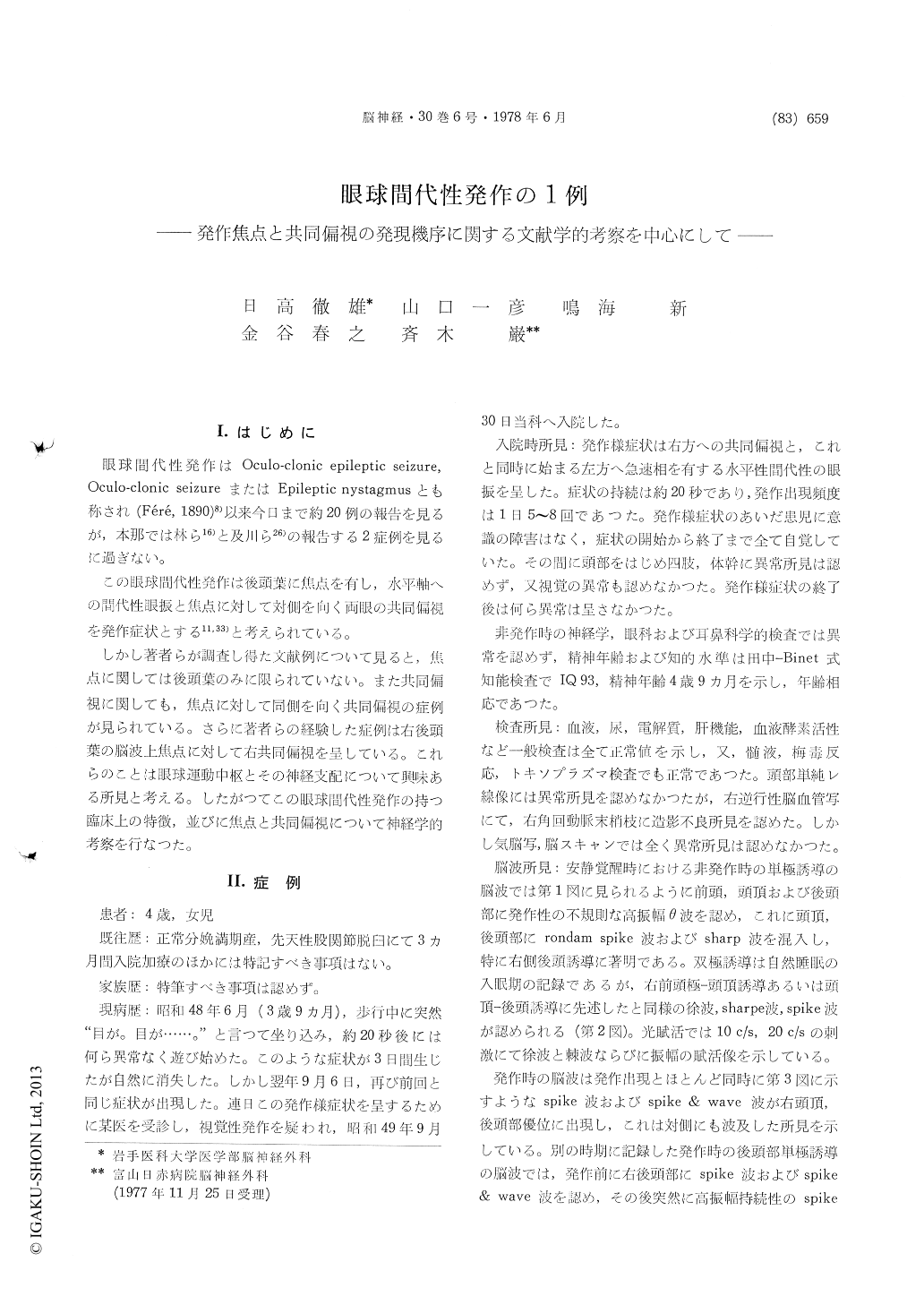Japanese
English
- 有料閲覧
- Abstract 文献概要
- 1ページ目 Look Inside
I.はじめに
眼球間代性発作は Oculo clonic epileptic seizure,Oculo-clonic seizureまたはEpileptic nystagmusとも称され(Féré,1890)8)以来今日まで約20例の報告を見るが,本那では林ら16)と及川ら26)の報告する2症例を見るに過ぎない。
この眼球間代性発作は後頭葉に焦点を有し,水平軸への間代性限振と焦点に対して対側を向く両眼の共同偏視を発作症状とする11,33)と考えられている。
Oculo-clonic epileptic seizure was first reported by Féré (1890).
Our case was a 4 year-old girl who had a recent history of attacks of the right conjugate deviation and horizontal jurked nystagmus to the left side. Her EEG examination revealed the epileptic focus to be at the right occipital lobe, but she had no clinical signs on other examinations.
Generally, we have thought that oculo-clonic epileptic seizure is caused by occipital discharge, and its clinical signs are ocular nystagmus and contra-lateral conjugate deviation against the focus side. Therefore, we attempted to gather as many reports of oculo-clonic epileptic seizure as possible and we studied our case and 20 other cases which had already been reported as oculo-clonic epileptic seizure.
The focus of these cases localized in one or other of the cortical eye movement areas, the highest percentage of seizure focus (88%) being in the oc-cipital eye movement area.
Nevertheless in some cases the frontal or parietal eye movement areas were affected.
Many anatomical reports substantiate these find-ings, therefore we consider that oculo-clonic epi-leptic seizure may occur by the seizure discharge at some cortical eye movement areas.
As to the problem of the direction of the con-jugate deviation against the focus side, these case reports show that the contra-lateral and homo-fateral conjugate deviation for the focus side wasfound in almost the same number of cases. It has been thought that the clinical signs of oculo-clonic epileptic seizure are caused by oculomotor paresis or vestibular stimulation which are projected by seizure discharge, but this does not explain the homo-lateral conjugate deviation. We believe that the cortical region of the ocular moving elements may localize at each cortical eye movement area, and that these localized cortical centers may each have different thresholds.
Therefore, stimulation of each localized cortical center will bring about the contra or homo-lateral ocular deviation.

Copyright © 1978, Igaku-Shoin Ltd. All rights reserved.


